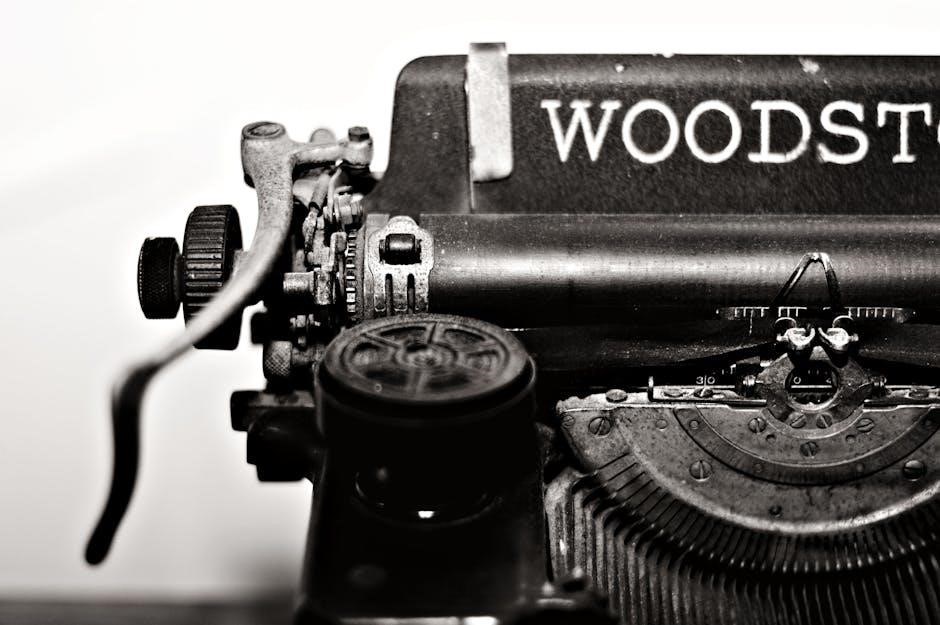Manual Bottle Filling Machine: A Comprehensive Guide
This guide aims to provide a comprehensive understanding of manual bottle filling equipment, exploring its different types, advantages, disadvantages, applications, and factors to consider when choosing the right equipment for your specific needs. Selecting the right one gives many advantages.

Manual bottle filling machines are essential tools for small-scale production, offering an affordable and versatile solution for filling various liquids and pastes. When setting up a production line for liquid products, choosing the right bottle filling machine is crucial. The two main types available are manual and automatic. Understanding the differences and weighing the factors is crucial in making an informed decision.
Manual machines are the most basic type, which requires an operator to control the filling process. Key features of manual liquid fillers include simple design and operation and are an affordable option for small-scale production. They are ideal for low-viscosity liquids. They can handle filling bottles in many sizes, filling up to 18 cases per hour.
These machines are commonly used for thin, non-viscous liquids like water, juices, and some sauces. They offer flexibility and mobility, but they don’t operate relying on electricity or compressed air like their semi-automatic and automatic counterparts. It’s also easy to clean up when using a sanitizing keg.
Types of Manual Bottle Filling Machines
Manual liquid filling machines come in various designs, each suited for different types of liquids and production needs. The most common types include gravity fillers, piston fillers, and volumetric fillers. Gravity fillers are ideal for free-flowing liquids and operate by using gravity to dispense the liquid into the bottles. These are straightforward in design and generally low-cost, making them accessible for many manufacturers.
Piston fillers, on the other hand, use a piston mechanism to draw and dispense liquids, offering greater accuracy and control, especially for thicker substances such as oils and creams; The volume of liquid filled can be accurately controlled by adjusting the stroke length of the piston. Volumetric fillers measure the liquid by volume, ensuring consistent fills regardless of viscosity changes.
Each type has its advantages and disadvantages, making them suitable for different applications. Understanding these differences is crucial in selecting the right manual filling machine for your specific requirements. The modular design allows for flexible filling of different cylinder diameters, heights, and valve types.
Gravity Filling Machines: Principles and Applications
Gravity filling machines operate on a straightforward principle: they utilize the force of gravity to transfer liquid from a tank into containers. The liquid flows from an elevated tank, through a nozzle, and into the bottle below. The filling process is regulated by the height of the liquid in the tank and the design of the nozzle, ensuring a consistent flow rate.
These machines are commonly employed for thin, non-viscous liquids such as water, juices, and some sauces. They are particularly well-suited for high-speed production lines where quick and efficient filling is essential. Gravity fillers are popular due to their simplicity and low cost, making them accessible to a wide range of manufacturers.
In terms of applications, gravity filling machines are frequently used in the food and beverage industry for bottling beverages, as well as in the chemical industry for packaging low-viscosity solutions. Their ease of use and maintenance further contribute to their widespread adoption in various production settings. Although a number of automated systems use gravity fillers, the gravity filling machine principle is mostly found in manual models.
Piston Filling Machines: Functionality and Uses
Piston filling machines utilize a precise volumetric method to dispense liquids into containers. At the heart of this system is a piston within a cylinder, which draws liquid in during the intake stroke and then dispenses it into the bottle during the discharge stroke. The volume of liquid dispensed is accurately controlled by adjusting the stroke length of the piston, ensuring consistency across fills.
These machines are particularly well-suited for handling thicker liquids such as oils, creams, and sauces, making them versatile for a wide range of products. Their ability to handle varying viscosities makes them a popular choice in the food, cosmetic, and pharmaceutical industries.
In terms of applications, piston fillers are commonly used for packaging products like lotions, gels, and viscous food items. Their accuracy and ability to handle different viscosities make them adaptable for various production requirements. Piston filling machines offer high accuracy and can handle a wide range of viscosities, making them adaptable for different applications. These offer flexibility and mobility.
Advantages of Manual Bottle Filling Machines
Manual bottle filling machines offer several key advantages, particularly for small-scale production and businesses just starting out. One of the most significant benefits is their lower initial cost compared to semi-automatic or fully automatic systems. This makes them an accessible option for businesses with limited capital.
Ease of use is another major advantage. Manual machines typically have a simple design and operation, requiring minimal training for operators. This reduces the learning curve and allows for quicker setup and implementation. Flexibility is another key benefit. Manual fillers can handle a wide range of bottle sizes and shapes without requiring extensive adjustments or changeovers, offering versatility in production.
Moreover, manual operation allows for higher quality control. Operators can closely monitor each fill for consistency and accuracy, ensuring that products meet the desired standards. They are also ideal for low-viscosity liquids, and are available for flat and round bottles. Manual liquid bottle filling machines are compact and simple to use.
Lower Initial Cost and Ease of Use
One of the primary advantages of manual bottle filling machines lies in their significantly lower initial cost compared to automated systems. This affordability makes them an attractive option for startups, small businesses, and operations with limited budgets. The reduced capital expenditure allows these businesses to allocate resources to other critical areas, such as product development and marketing.
Furthermore, manual filling machines are renowned for their ease of use. Their straightforward design and simple mechanics require minimal training for operators, reducing the learning curve and allowing for quick integration into the production process. This ease of operation translates to lower labor costs and increased efficiency, as operators can quickly become proficient in using the equipment.
The absence of complex electronic components or intricate programming further simplifies the operation and maintenance of manual filling machines. This simplicity reduces the risk of technical issues and minimizes downtime, ensuring a smooth and consistent filling process. Manual machines offer flexibility and mobility, but they dont operate relying on electricity or compressed air.

Flexibility in Handling Different Bottle Sizes
Manual bottle filling machines offer a distinct advantage in their ability to accommodate a wide range of bottle sizes and shapes. Unlike automated systems that may require specific tooling or adjustments for different container dimensions, manual machines can often be quickly adapted to handle various bottle formats with minimal effort.
This flexibility is particularly beneficial for businesses that produce a diverse product line or cater to niche markets with unique packaging requirements. Whether filling small vials, standard bottles, or oddly shaped containers, manual filling machines provide the versatility needed to meet diverse packaging needs.
The adaptability of manual filling machines extends to different bottle materials as well. They can handle glass, plastic, and metal containers without requiring specialized modifications. This versatility streamlines the filling process and eliminates the need for multiple machines to accommodate different bottle types. The modular design allows for flexible filling of different cylinder diameters, heights, and valve types. They are available for flat and round bottles.

Disadvantages of Manual Bottle Filling Machines
While manual bottle filling machines offer several advantages, they also have certain limitations that should be considered. One of the primary drawbacks is their reliance on manual labor, which can result in inconsistencies in fill levels and reduced production speed compared to automated systems.
The accuracy of manual filling depends heavily on the operator’s skill and attention to detail. Human error can lead to overfilling or underfilling, potentially affecting product quality and consistency. Additionally, manual filling can be physically demanding, especially during long production runs, which may contribute to operator fatigue and decreased efficiency.
Another disadvantage is the limited scalability of manual filling operations. As production volume increases, manual filling may become impractical due to the labor-intensive nature of the process. Transitioning to automated filling systems may be necessary to meet growing demand and maintain consistent product quality. Unlike semi-automatic and automatic counterparts, manual fillers don’t operate relying on electricity or compressed air.
Limited Speed and Production Capacity
Manual bottle filling machines, while cost-effective and versatile, inherently possess limitations in speed and production capacity. Their reliance on manual operation means that the filling rate is directly tied to the operator’s capabilities and endurance. This contrasts sharply with automated systems that can consistently fill bottles at a much faster pace.
In environments where high-volume production is a necessity, manual filling machines may prove inadequate. The time required to manually fill each bottle, coupled with the potential for operator fatigue, significantly restricts the number of bottles that can be processed within a given timeframe. Even with skilled operators, the output is unlikely to match that of automated systems, making manual filling less suitable for large-scale operations.

Furthermore, the consistency of filling speed can fluctuate throughout a production run due to variations in operator performance. Breaks, changes in focus, and physical strain can all impact the overall speed and efficiency of the filling process. This variability can lead to bottlenecks and inconsistencies in production schedules, hindering the ability to meet tight deadlines and fulfill large orders promptly. Manual bottle-filling machines can handle filling bottles in many sizes.
Applications of Manual Bottle Filling Machines
Manual bottle filling machines find their niche in various applications where flexibility, affordability, and ease of use are paramount. These machines are particularly well-suited for small-scale production, such as craft breweries, distilleries, and artisanal food producers. In these settings, the lower production volume aligns perfectly with the capabilities of manual filling systems.
Research and development laboratories often employ manual bottle filling machines for precise dispensing of liquids during experiments. The ability to manually control the filling process allows researchers to accurately measure and dispense small quantities of reagents or samples. Similarly, compounding pharmacies utilize manual fillers to prepare customized medications and prescriptions with meticulous accuracy.
Furthermore, manual bottle filling machines are ideal for businesses that handle a diverse range of liquids or bottle sizes. Their adaptability to different container types and fluid viscosities makes them a versatile solution for companies with varying product lines. They also allow for higher quality control since operators can closely monitor each fill for consistency. Manual liquid filling machines are essential tools for small-scale production, offering an affordable and versatile solution for filling various liquids and pastes.
Factors to Consider When Choosing a Manual Bottle Filling Machine
Selecting the right manual bottle filling machine requires careful consideration of several key factors to ensure it meets your specific production needs. First and foremost, evaluate the types of liquids you intend to fill. Different machines are better suited for various viscosities, ranging from thin liquids like water and juices to thicker substances such as oils and creams.
Next, assess the range of bottle sizes and shapes you plan to accommodate. Some machines offer greater flexibility in handling diverse container types, while others are designed for specific bottle formats; Also, the machine should be easy to clean and sanitize to maintain product quality and safety. Stainless steel components are often preferred for their durability and resistance to corrosion.
Consider the filling accuracy and consistency required for your products. Manual fillers rely on operator control, so choosing a machine with clear markings and adjustable settings can improve precision. Evaluate the machine’s ease of use and maintenance requirements. Simple designs with readily accessible parts minimize downtime and simplify repairs.
Finally, consider the cost of the machine in relation to your budget and production volume. Manual fillers are generally more affordable than automated systems, but it’s essential to balance cost with performance and durability. Flexibility in equipment allows manufacturers to adapt to market trends and growth. By being informed about the different types of liquid filling machines, manufacturers can optimize their filling operations, ensuring efficiency and product quality in their production processes.

Leave a Reply
You must be logged in to post a comment.